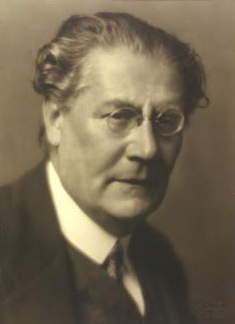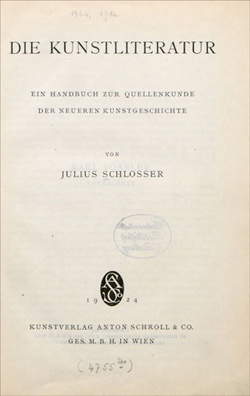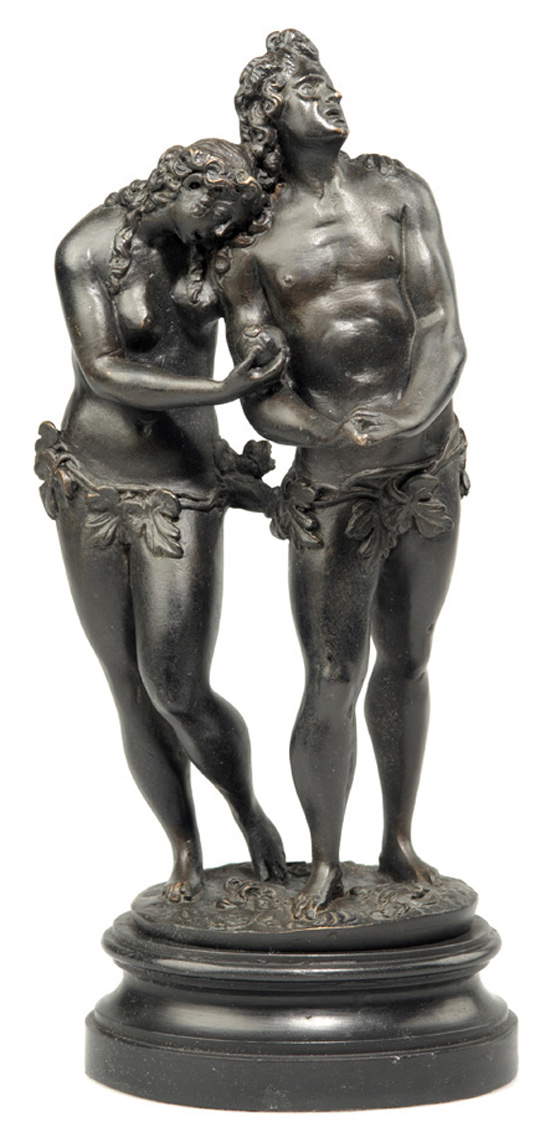We resume, with this article, our brief history of art criticism that we had begun with the small contributions on the figures of Giovanni Morelli and Giovanni Battista Cavalcaselle: to introduce the topic of this new “installment” in the series, we must go right back to the beginning, to the figure of Giovanni Morelli. The Morellian method had gained wide acclaim in Vienna, where a group of art historians was active that would later go down in history as the Vienna School: just like Morelli, these Austrian scholars were trying to provide, to the discipline of art history, a method that was based on a solid scientific framework. We are still in the second half of the nineteenth century, and the cultural climate is still dominated by the positivism that had had a vast influence on the Morellian method.
Morelli personally met some of these scholars. The episode is recalled by Julius von Schlosser (1866 - 1938) in his 1934 work Die Wiener Schule der Kunstgeschichte (“The Viennese School of Art History”): a seminal work also because it was the one that perhaps more than any other helped to define, precisely as the “Viennese School of Art History,” the group of these important Austrian art historians, all more or less linked to theUniversity of Vienna. The term “school” did not denote an institution that brought these intellectuals together: it was simply a label whose function was to identify them as a united group. We said that Schlosser, in his 1934 treatise, recalled his meeting with Morelli (who used to travel to Vienna for study), which took place at theAlbertina, the great collection created in the eighteenth century by Albert of Saxony-Teschen: “Wickhoff introduced his pupils [...], above all Hermann Dollmayr, but also yours truly, to the ’Senator,’ and the meeting left us with memories that have remained among the most precious of our lives.”
 |
| Julius von Schlosser |
How, then, did Schlosser rework Morelli’s theses? As we had seen, the Morellian method had major limitations, but it had nevertheless highlighted the need to study a work of art by following a method endowed with scientific rigor. This is the basis from which the Vienna School started. Schlosser had trained as a philologist, and had come to art history through the study ofarchaeology. He was thus convinced that the basic approach, towards a work of art, could not be separated from a study that was, precisely, philological, and that took into account a fundamental aspect: art history had to be seen as the sum of a history of style and a history of artistic language. The same distinction that, in letters, applies to the history of literature and the history of language. Schlosser, in other words, divided the works produced by the great creative geniuses, i.e., those who invented styles and genres (history of style), from the works produced instead by those who shaped a language by reproducing or imitating the achievements of the greatest artists (history of language): one can see in this the influence of Benedetto Croce, who was convinced that there could not so much be a history of art as a history of artists. Studying a work of art, for Schlosser, thus amounted to reconstructing its relations with the history of style on the one hand, and with the history of language on the other: it meant, in other words and taking up the conceptions of an important linguist, Karl Vossler, to see a work as a product of theevolution of a certain style created at a certain moment in history, a style that, having become a shared heritage, became language. And the work, as a product of a language, had to be studied in relation to other objects produced through the use of the same language: this is what happens, after all, in the field of philology as well. It is precisely the study of these relationships and the language of the work that would lead the scholar to identify the specific features of the style that distinguishes the work.
 |
| Title page of the work Die Kunstliteratur by Julius von Schlosser (1924, Kunstverlag Anton Schroll & co., Vienna) |
We find an interesting application of Schlosser’s method in an attribution he formulated for a bronze group depicting Adam and Eve, preserved since 1891 in the Kunsthistorisches Museum in Vienna. The scholar assigned it to the Genoese sculptor Niccolò Roccatagliata (news from 1593 to 1636): an attribution later accepted by all critics. Schlosser arrived at Roccatagliata by comparing the work with another group sure to be by the Ligurian artist, the Paliotto di San Moisé (named after the Venetian church that houses it), with which he had identified stylistic compatibility. Even more interesting, however, was his intuition to compare the “shaping of the figures” with that of Tintoretto’s figures: the contact between Tintoretto and Roccatagliata was corroborated precisely by the study of literary sources. In particular, Schlosser referred to the Vite de’ pittori, scultori et architetti genovesi by Raffaele Soprani (1612 - 1672), in which a friendship linking the two artists was mentioned. The study of written sources had, therefore, proved decisive in assigning the work.
 |
| Niccolò Roccatagliata, Adam and Eve (1629; bronze, height 29 cm; Vienna, Kunsthistorisches Museum) |
Reference bibliography
Warning: the translation into English of the original Italian article was created using automatic tools. We undertake to review all articles, but we do not guarantee the total absence of inaccuracies in the translation due to the program. You can find the original by clicking on the ITA button. If you find any mistake,please contact us.